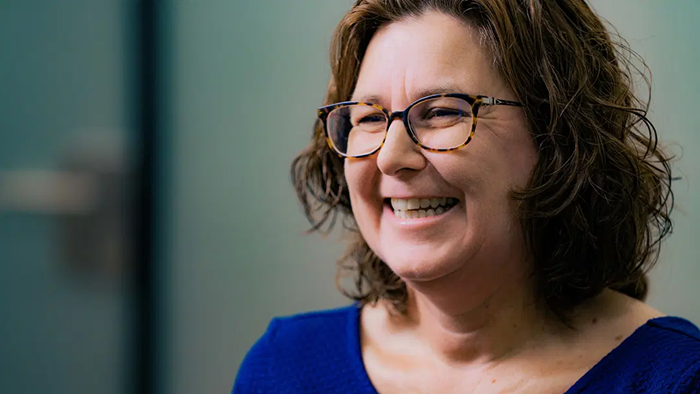In this Interview, News Med talks to Femke de Theije about heartfelt innovation for emergency care.
What does the handheld device developed by your team do?
Our handheld device can help determine if someone is having a heart attack in as little as eight minutes with just a finger stick of blood. Traditionally, getting such results required a larger blood sample collected via a venous blood draw, which could take up to an hour. Our device streamlines this process, providing quick and accurate results, which are crucial for timely treatment.

Image Credit: Siemens Healthineers

Image Credit: Siemens Healthineers

Image Credit: Siemens Healthineers

Image Credit: Siemens Healthineers
How does this device benefit patients, doctors, and emergency care teams?
Patients do not have to wait long for test results, which means they can receive the right treatment faster, increasing their chances for recovery. Doctors can immediately act on the test results, particularly crucial in cases like heart attacks where every minute counts.
Emergency care teams can quickly distinguish between those who need immediate medical attention and those who do not. Additionally, our device allows central lab teams to focus on other tests while still tracking decentralized testing via handheld devices, which can help alleviate overcrowding in emergency departments.
How can this technology help address overcrowding in emergency departments?
By simplifying the testing process and accelerating the turnaround time from test to result, our device has the potential to alleviate overcrowding in emergency departments, where it is a pressing issue. This is because patients can be triaged more efficiently, and those who require immediate attention can be identified and treated promptly, freeing up resources for other patients.
What motivated you to pursue this project?
I have always been driven by my desire to make a substantial difference in people's lives. "Follow your heart!" has become my mantra. If your work does not ignite your passion, it is time for a change.
I started out studying dentistry because I wanted to improve people's lives, but I found it boring. Chemistry appealed to me because of its broad scope and the challenge of discovering new things. My passion for unraveling complex mechanisms led me to pursue my Ph.D. in surface chemistry.
This background in chemistry and surface chemistry provided the foundation for developing the technology behind our handheld device.
What was the main challenge in developing this handheld device?
The main challenge was creating a point-of-care device that could match the performance of lab devices, which are constantly improving. Traditional technologies were either too expensive or not sensitive enough to measure troponin at lab quality.
We found the missing puzzle piece in magnetism, using magnetic nanoparticles to detect troponin. This allowed us to develop a completely new technology that is both sensitive and efficient.
How did you and your team approach innovation?
Breakthrough moments often occur during casual conversations over lunch or coffee breaks. We have a diverse team of experts from different fields who bring unique perspectives, allowing us to find sustainable solutions.
Our team includes chemists, biochemists, physicists, electrical engineers, industrial engineers, process developers, and software developers, each contributing their expertise to the project. By bringing together these different perspectives and building on each other's ideas, we were able to create a technology that revolutionizes emergency care.
What is your role in the R&D department for emergency care?
As head of the R&D department, my main goal is to get our device, called the Atellica® VTLi Patient-side Immunoassay Analyzer, into the hands of emergency care teams worldwide. I act as a catalyst for collaboration, bringing everyone together to create something useful while enjoying the process.
The innovation part is only a tiny portion of the work we do in R&D. To launch a product successfully, you need everyone's support, from designers and production teams to marketing and customer support.
What are your plans for this technology?
We believe our solution can contribute to enabling better access to fast diagnosis, especially in small hospitals, rural areas, or care institutions in low- and middle-income countries, where they do not have a big lab nearby. In the future, we want to expand our technology to test for more conditions where fast results matter.
Since the Atellica VTLi System was designed as a versatile platform, it has the potential to be expanded to test for additional conditions where rapid results are crucial. As long as teams like ours continue to innovate with passion, curiosity, and responsibility, the future of emergency care looks promising.
About Femke de Theije
Femke de Theije is Head of R&D for Emergency Care at Siemens Healthineers and is a technical specialist with 20 years of experience in innovative environments. As a technical specialist, Femke de Theije has been working on cutting-edge technologies, bringing the capability to build bridges between different disciplines and educational levels to solve complex problems.
About Siemens Healthineers
Siemens Healthineers develops innovations that support better patient outcomes with greater efficiencies, giving providers the confidence they need to meet the clinical, operational and financial challenges of a changing healthcare landscape. As a global leader in medical imaging, laboratory diagnostics, and healthcare information technology, we have a keen understanding of the entire patient care continuum—from prevention and early detection to diagnosis and treatment.
* The products (mentioned herein) are not commercially available in all countries. Not available for sale in the U.S.A. Their future availability cannot be gauranteed,